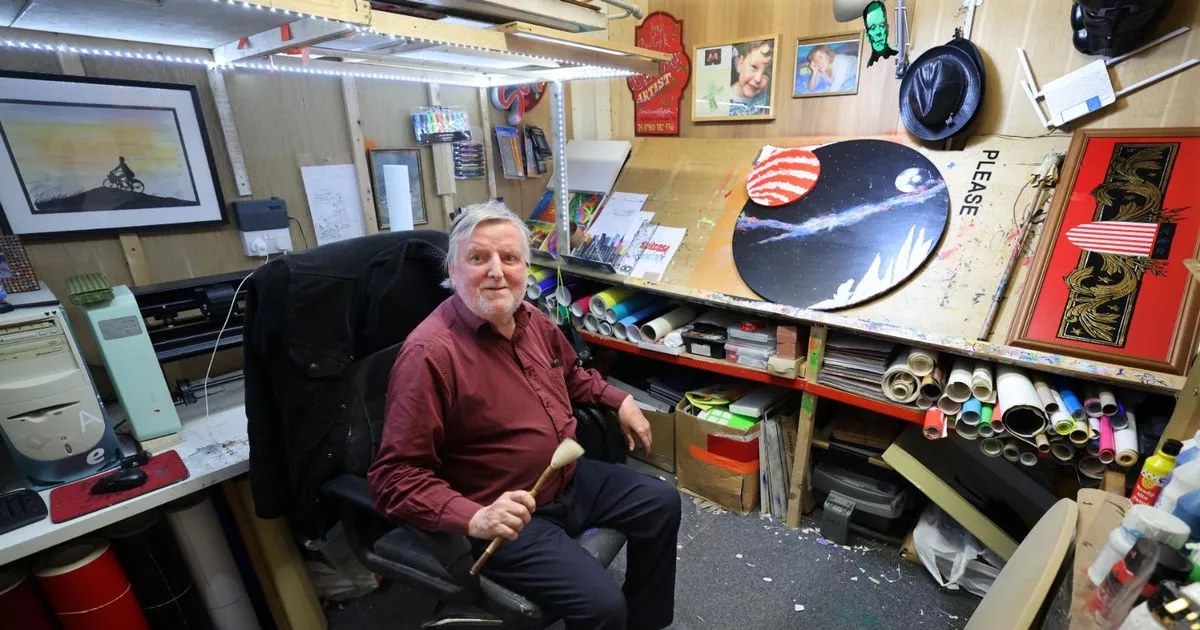Ken Bullock and Harry Mytton are just two of the city’s artists keeping Liverpool’s history alive through hand painted signs
11:36, 24 May 2025Updated 16:06, 24 May 2025
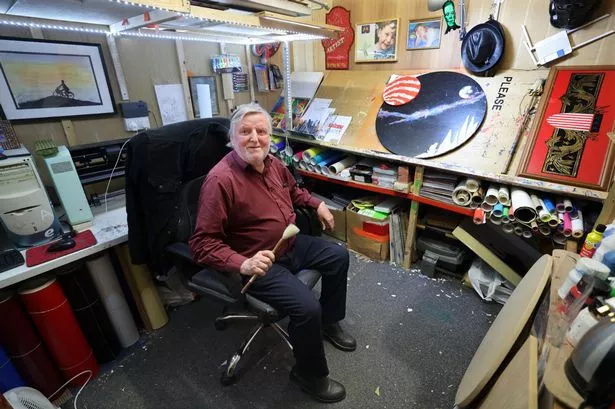 Ken at his studio in Make CIC on Regent Street(Image: Colin Lane/Liverpool ECHO )
Ken at his studio in Make CIC on Regent Street(Image: Colin Lane/Liverpool ECHO )
On Slater Street, in the heart of the city centre, R Jackson & Sons has been supplying materials to some of Liverpool’s finest artists since 1866.
Its 150 year history has seen customers from The Beatles’ original bassist, Stuart Sutcliffe to Welsh painter Augustus John.
But if you take a moment to look up, you might find that some of R Jackson’s most interesting history can be found before you even enter its doors.
The bold block lettering on the front of the store is technically new but its spirit and style has remained unaltered. The sign is just one of many in Liverpool holding decades worth of trade history and craftsmanship.
“It was fading beautifully,” says sign writer Harry Mytton. He was entrusted to paint the latest iteration of the sign which he says is only the fourth in the shop’s century and half long existence.
Harry based his design heavily on previous signs, the letters of which have been left under the new paint as a layer of history, but with his own “twist”.
More than just a romantic reminder of the history of Liverpool’s traders, for Harry, old shop fronts form an important part of social history.
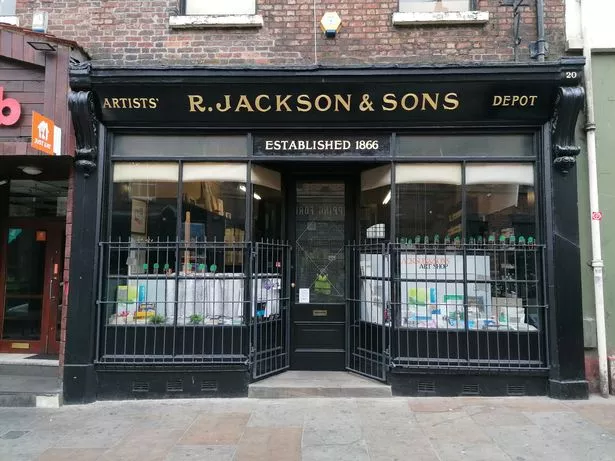 R. Jackson & Sons sells oils, water colours, inks, acrylics, pastels, print-making materials, gilding materials, papers and canvases(Image: Harry Mytton )
R. Jackson & Sons sells oils, water colours, inks, acrylics, pastels, print-making materials, gilding materials, papers and canvases(Image: Harry Mytton )
He said: “There’s so much history in the signs and they mean so much to people.
“You can just imagine this being the shop where someone’s grandad might have bought their first brushes.”
The 36-year-old isn’t the only one to recognise the beauty in hand painted signs, and he tells the ECHO that the craft is increasingly sought after in the city particularly among pub owners.
His work has included signs for the Queen of Hope Street, The White Hart, St Peters Tavern, Black Cat bar and Pogue Mahone.
“People will recognise my signs because of the E. They’ll go ‘there’s another of Harry’s’.”
Harry started sign writing nearly 10 years ago and is mostly self taught except for short courses in Slough.
Harry added: “Back in the day painters and decorators would know how to do a bit of sign writing.
“When you meet the old boys a lot of them used to do a bit of sign writing too. In the ’80s and ’90s computer generated signs kind of killed off that generation and now it’s a more specialist skill.”
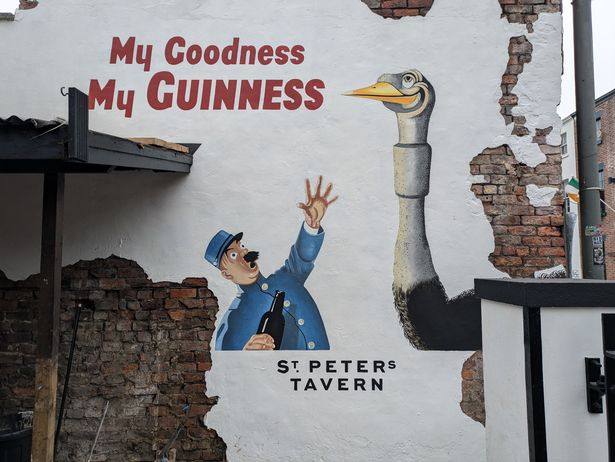 One of Harry’s signs at St Peter’s Tavern on Seel Street(Image: Harry Mytton )
One of Harry’s signs at St Peter’s Tavern on Seel Street(Image: Harry Mytton )
Despite the nichification of the craft, a community of sign writers exists in the city and Harry works closely alongside colleague Chrissy Conlin.
Fellow sign writer and friend, Ken Bullock, 72, has been in the trade since he left school aged 15.
Officially retired, Ken still works from his studio on Regent Street and his career has seen signs for venues from the Camp and Furnace to Liverpool’s oldest building, The Bluecoat and even the original Home (and) Bargains signs.
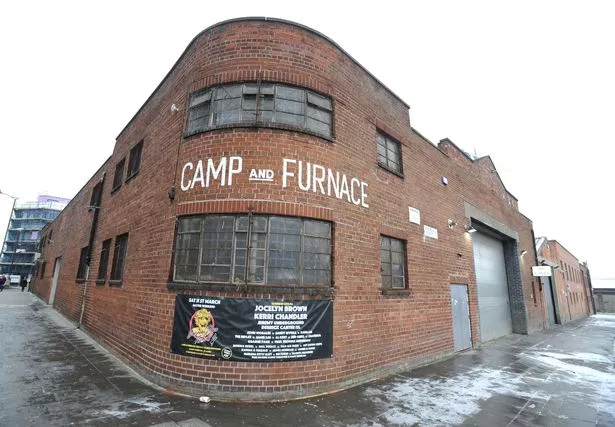 Camp And Furnace on Greenland Street(Image: Andrew Teebay/Liverpool ECHO )
Camp And Furnace on Greenland Street(Image: Andrew Teebay/Liverpool ECHO )
“I’ve done everything,” says Ken. “If I had to write it all down it would be on a toilet roll.”
“I’ve painted galleons, racing cars and narrow boats but never trains.”
Despite having no formal art education, Ken adopted a love of painting and a skill for repurposing materials from his Dad and fondly recalls his painting him a “picture of a galleon on the back on a Bird’s Eye box”.
The 72-year-old added: “If you cut me through the middle like a rock, I’m a sign writer. It’s all I’ve ever known.”
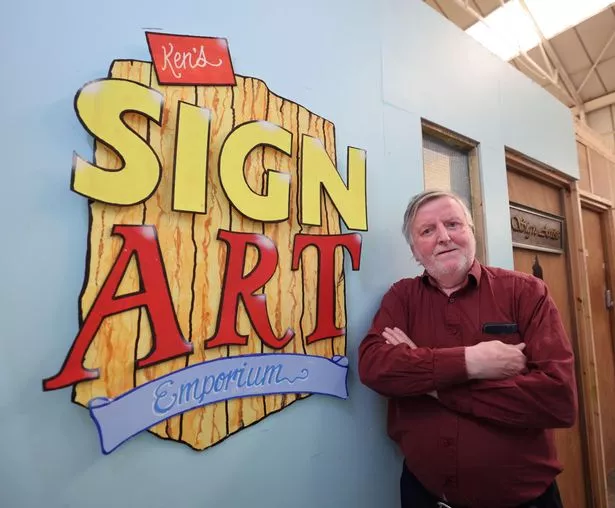 Ken Bullock has been sign writing since 1968 and has worked on some of Liverpool’s most recognisable venues(Image: Colin Lane/Liverpool ECHO)
Ken Bullock has been sign writing since 1968 and has worked on some of Liverpool’s most recognisable venues(Image: Colin Lane/Liverpool ECHO)
Ken now makes posters for Chung Ku’s “cars and coffee” events, as well as for Make CIC and various other arts projects commissioned in Liverpool.
He added: “I always work straight onto the poster, I don’t draft. I’ve always been able to. I’ll be looking at a blank 7ft piece of paper and I can see before I start where the letters start and end.”
Like Harry, Ken sees a resurgence in hand painted signs.
Ken said: “Harry is carrying on the tradition. A lot of people don’t like computer generated signs – they want to see you out there with your stick.
“If I use a computer generated letter S, I could cut 100 and they will all be the same. If I do them by hand each one will be different.
“I would love to make an exhibition of all the sign writers in Liverpool. No one knows how it’s done but this trade is a myriad of skills. We take a blank board and make it beautiful.”
As well as careful painting, the skills of a sign writer involve marble graining, gold leafing and gilding to name a few.
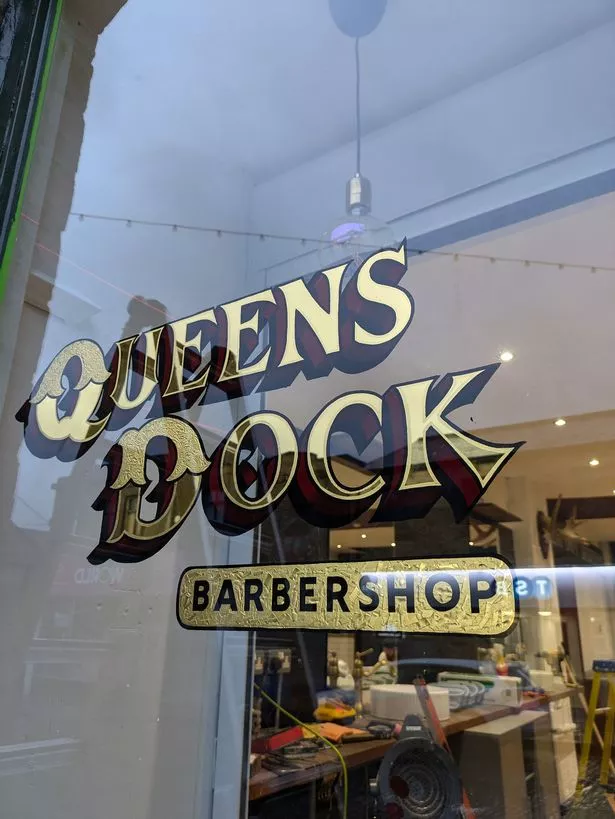 Gold lettering work by Harry (Image: Harry Mytton )
Gold lettering work by Harry (Image: Harry Mytton )
But for Harry the most important skill needed is patience. He said: “You can slap it on or you can take care to get paint into every groove. You have to take the time to be obsessed with it.
“Seeing the signs around town – more business owners are now viewing it as an option. Hand painted signs have soul and they have life.”
Despite being an increasingly specialist skill, sign writing’s passionate purveyors are keeping the craft alive, and even growing.
As local businesses take on new paint, Liverpool’s sign writers can also point us to parts of the city’s past – from its oldest traders to its shipping history.
For Harry the growing trend of hand painted signs reflects a generally renewed respect for hand craftsmanship, now increasingly embedded in the careful lettering of Liverpool’s streets.
